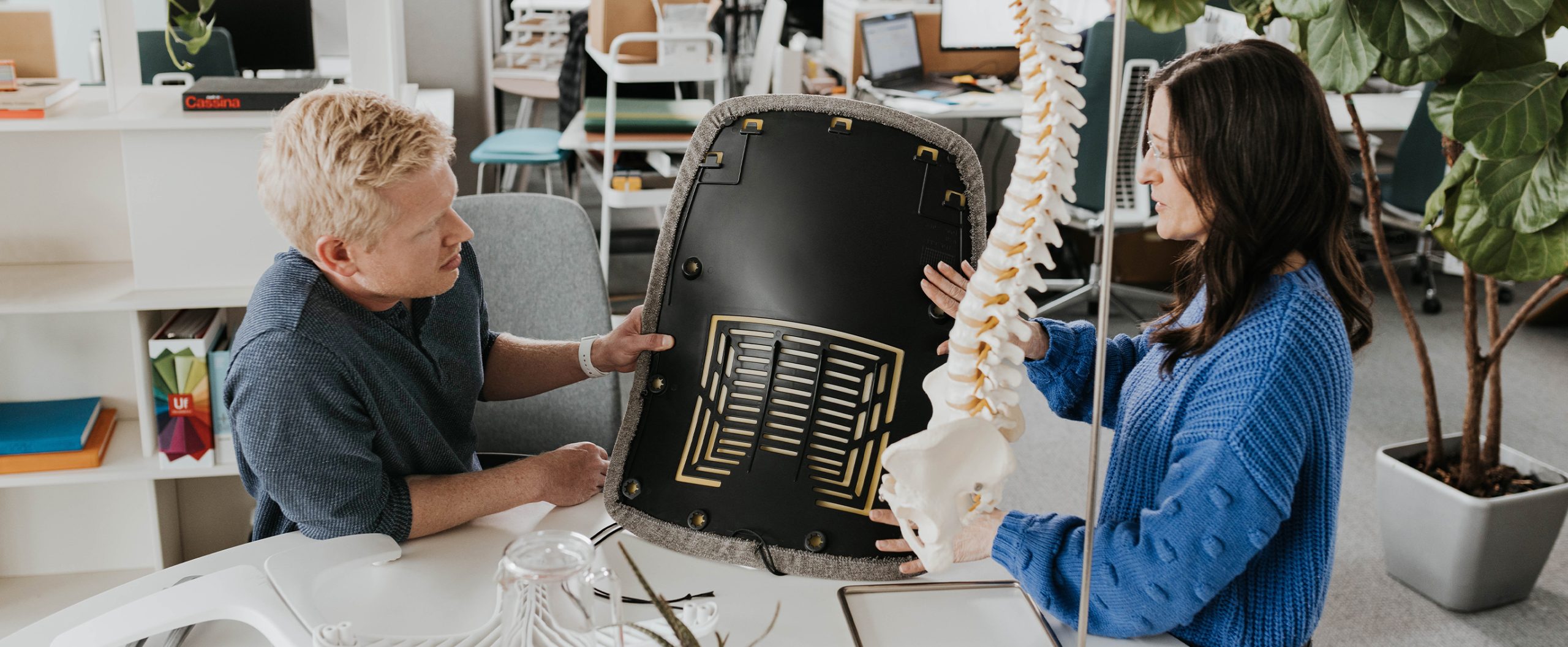
How Haworth seating supports your spine
Haworth has been crafting workspaces for over seventy-five years. Taking care of people as they work is critical to a healthy workplace – and supporting the spine is the backbone of that mission.
(Forgive the irresistible pun.)
Some days, it may seem like your workspace just won’t let you be healthy. You might lack ergonomic furniture. You might not move much; many office workers report sedentary behaviour at work.
A lack of ergonomic furniture combined with sedentary sitting behaviour can contribute to several health issues – including low back pain (LBP), which the WHO describes as the ‘single leading cause of disability worldwide’.
But the workday doesn’t have to be an obstacle to a healthy life. The workplace can be your ally.
The ingredients in a healthy workday
As we discussed last week, a healthy workday combines healthy, dynamic motion with supportive, ergonomic furniture.
With the Move More Workday recommendation from last week’s article, you have the ‘healthy, dynamic motion’ part of the equation covered.
Today’s article focuses on the ‘supportive, ergonomic furniture’ bit – specifically, your seating arrangement.
How does an ergonomic chair treat your spine with the respect it deserves? Let’s break it down.

Lower back: lumbar region
Your lower back – the lumbar portion of your spine – supports your upper body. Your lumbar is like the backstage crew supporting the headline act – it’s not often in the spotlight, but your whole day depends on its support.
Without lumbar support in your seating, it’s tempting to slouch into a bad sitting posture. This sedentary behaviour causes your spine to lose its healthy S-shape, which will eventually lead to discomfort and pain.
Haworth chairs don’t want your lower back to ache. The thoughtful lumbar support in our ergonomic chairs helps your lower spine maintain its healthy S-shaped curve.
An adjustable lumbar support system is best, so that you can personalise the height to your preference.
And if you’re like most people, you may prefer more support on one side than the other. You can find asymmetric lumbar support in Zody.


Even lower back: the sacrum and the pelvis
The lowest portion of your spine, your sacrum, is connected to your pelvis. The sacrum and the pelvis are like inseparable best friends. This dynamic duo acts as a steady, strong foundation for much of your dynamic movements.
In your workplace, however, an ominous threat looms: Sedentary Sitting! This foe goes against everything the Sacrum & Pelvis duo stands for.
When you are captured by Sedentary Sitting, your pelvis rotates into an unhealthy posture, which can misalign the spine and potentially lead to low back pain.
Ergonomic chairs with pelvic support thwart the schemes of Sedentary Sitting. Pelvic support encourages a healthy pelvic posture and keeps your spine in that healthy, S-shaped alignment.
Fine tuning your support
Haworth’s ergonomic chairs allow you to personalise your comfort. To help you, your chair needs to fit you – so make sure you adjust everything properly. (If you have a Haworth chair, you can find adjustment videos on your chair’s product page – for example, here’s the video for Zody.)
And back support and armrests are just the start. For more research and ergonomic chair features such as seat depth and forward tilt, check out our seating guide.
